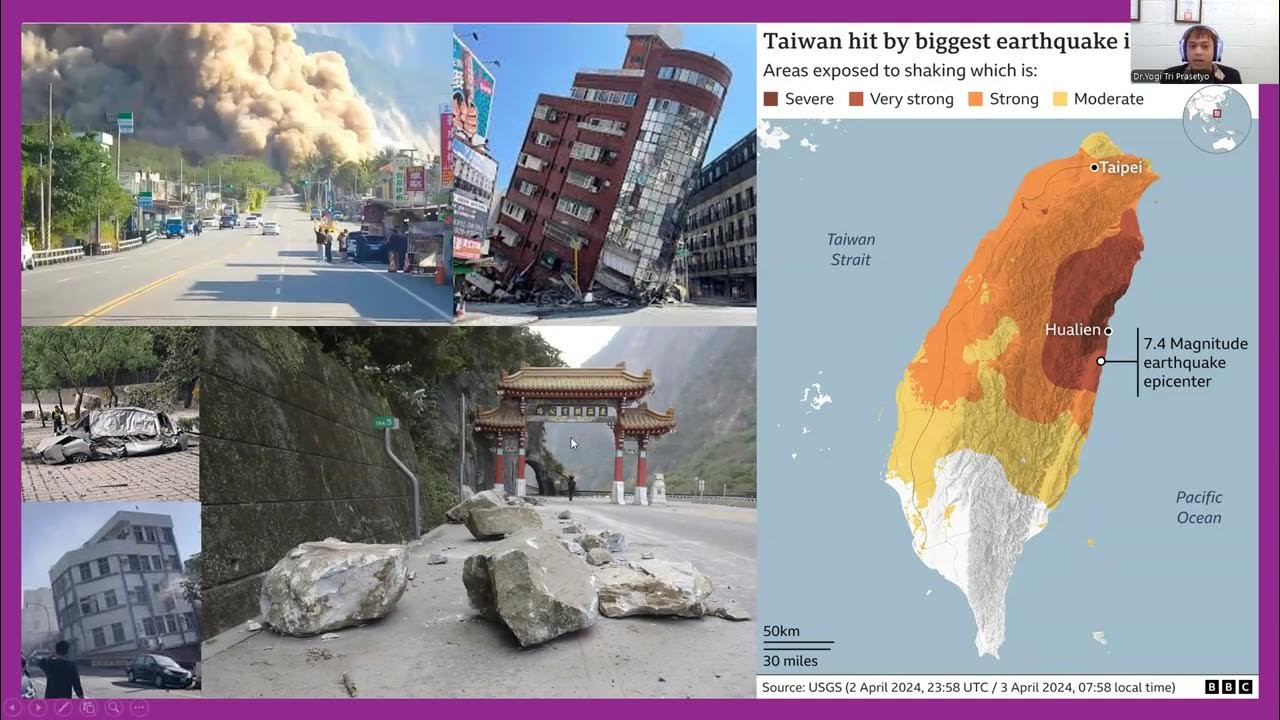Disaster Preparedness: The Key to An Effective Emergency Plan
Summary
TLDRIn this video, Katherine provides essential disaster preparedness tips for people in the Philippines. She covers the vital supplies to prepare in advance, including water, food, first aid kits, and tools for communication. The video also outlines what to do before, during, and after a disaster, emphasizing staying calm, following evacuation protocols, and checking in with local authorities. Additionally, Katherine highlights key emergency contacts and shares crucial facts about the country’s vulnerability to natural disasters. The video encourages proactive planning to ensure safety and resilience during disasters.
Takeaways
- 😀 Make sure to prepare essential items before a disaster, including water, food, first aid kit, flashlight, and important contact numbers.
- 😀 Always create an emergency plan for your family and ensure that everyone knows what to do in case of a disaster.
- 😀 Be familiar with your area's evacuation protocols and keep local emergency contact numbers easily accessible.
- 😀 Stay calm during a disaster to think clearly and make wise decisions.
- 😀 Follow the instructions and evacuation procedures provided by local authorities to ensure safety.
- 😀 After a disaster, find a safe place to stay and only return home when officials say it is safe.
- 😀 Reach out to local relief organizations for financial assistance if needed after a disaster.
- 😀 Check in with your family members after a disaster to provide emotional support and ensure everyone's well-being.
- 😀 List down important emergency contacts such as family members, local barangay, fire department, police, hospital, and national emergency hotline (911 in the Philippines).
- 😀 The Philippines' location in the Pacific Ring of Fire makes it highly vulnerable to earthquakes and volcanic eruptions.
- 😀 Disaster risk mitigation and rehabilitation efforts are a significant government expense in the Philippines, with a large portion of the budget allocated to recovery efforts.
Q & A
What are the essential items to prepare for a disaster?
-The essential items include water for drinking and sanitation, a three-day supply of non-perishable food, a battery-powered radio, cell phone with chargers and backup batteries, flashlight, first aid kit, whistle, mask, wipes for personal sanitation, local maps, a plastic sheet, and duct tape for shelter purposes.
Why is it important to stay calm during a disaster?
-Staying calm is important because it allows you to think more clearly and make wise decisions, which can significantly impact your safety and the actions you take during a disaster.
What should you do before a disaster strikes?
-Before a disaster, you should create an emergency plan for your family, ensure that necessary items are easily accessible, learn protective measures for evacuation, and keep a list of local emergency contact numbers.
What should you do during a disaster?
-During a disaster, stay calm, wait for further instructions, and follow local evacuation protocols to ensure everyone's safety and prevent anyone from going missing.
What is the key step after a disaster strikes?
-After a disaster, find a safe place to stay and check in with local officials for further instructions. Make sure to check the safety of your home before returning and contact relief organizations if needed.
How can you support family members after a disaster?
-Check in with your family members to understand how they feel and offer comfort to help them cope with the emotional impact of the disaster.
What are some important emergency contact numbers to keep on hand?
-You should keep the contact numbers of your immediate family, local barangay, fire department, local police stations, local hospital, and the national emergency hotline (9-1-1 in the Philippines).
Why is the Philippines particularly vulnerable to natural disasters?
-The Philippines is located within the Pacific Ring of Fire, a major fault zone that makes the country prone to earthquakes and volcanic eruptions. Additionally, the country faces frequent typhoons and other natural disasters.
What are some recent major disasters in the Philippines?
-Recent major disasters in the Philippines include Typhoon Ulysses and the eruption of the Taal Volcano, both of which caused significant disruptions to public life, business, and mobility.
Who is responsible for disaster recovery and rehabilitation in the Philippines?
-Local government units in the Philippines are responsible for rehabilitating the society and rebuilding infrastructures after natural disasters.
How much does the Philippine government spend on disaster risk mitigation and recovery?
-The Philippine government spends a significant amount on disaster risk mitigation and recovery, with the total expenditure reaching approximately 16.2 billion pesos for rehabilitation and recovery efforts.
Outlines

هذا القسم متوفر فقط للمشتركين. يرجى الترقية للوصول إلى هذه الميزة.
قم بالترقية الآنMindmap

هذا القسم متوفر فقط للمشتركين. يرجى الترقية للوصول إلى هذه الميزة.
قم بالترقية الآنKeywords

هذا القسم متوفر فقط للمشتركين. يرجى الترقية للوصول إلى هذه الميزة.
قم بالترقية الآنHighlights

هذا القسم متوفر فقط للمشتركين. يرجى الترقية للوصول إلى هذه الميزة.
قم بالترقية الآنTranscripts

هذا القسم متوفر فقط للمشتركين. يرجى الترقية للوصول إلى هذه الميزة.
قم بالترقية الآنتصفح المزيد من مقاطع الفيديو ذات الصلة

東日本大震災の時買い占められたもの|この備蓄が絶対に必要|災害対策・防災

Operation Listo Audiovisual Presentation

Project DINA: Volcano Eruption

Project DINA: Landslide

Disaster Readiness & Risk Reduction ( DRRR)- Lesson 1: BASIC CONCEPTS OF DISASTER AND DISASTER RISK

Applied Cognitive and Macro Ergonomics for Sustainable Disaster Risk Reduction
5.0 / 5 (0 votes)
